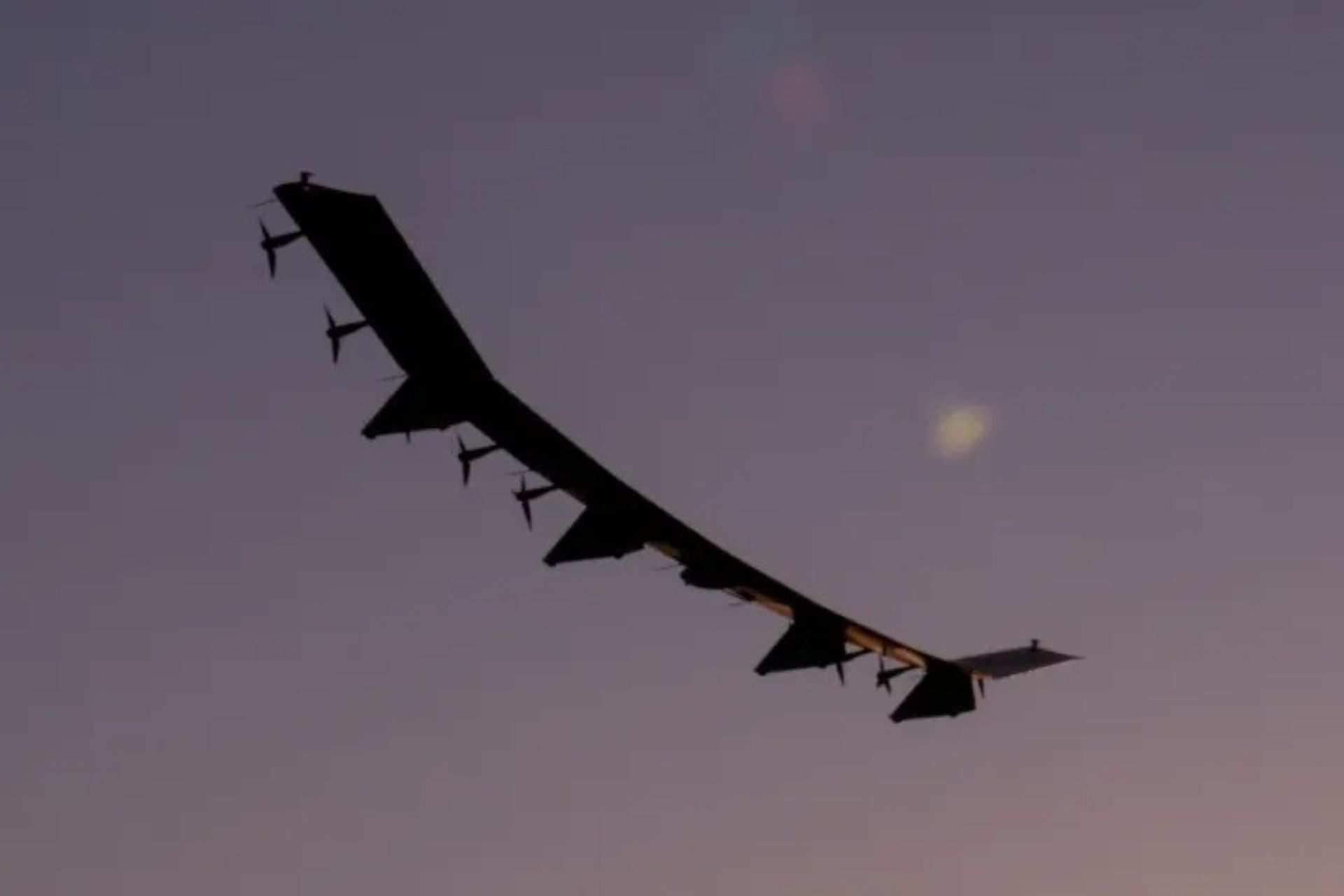Breaking News
US Army Unveils Autonomous Drone Capable of Months-Long Surveillance Missions.
The U.S. military has recently marked an advance in aerial surveillance with the unveiling of Horus A on October 1, 2024. This high-altitude, autonomous stratospheric drone, developed by AeroVironment (AV) and inspired by the Sunglider model, is engineered to meet both military and commercial needs. This solar-powered drone introduces a new level of technological innovation within the high-altitude platform station (HAPS) domain for government applications. Its capability for continuous, months-long flights, combined with a substantial payload capacity, makes it a strategic asset for extended surveillance and communication relay missions.

The Horus A high-altitude drone could be used to drop swarms of drones and munitions (Picture source: AeroVironment)
Horus A stands out with its unparalleled performance in the stratosphere, where it can carry up to 68 kilograms (150 pounds) of equipment and provide 1.5 kW of output power. Enhanced in design, avionics, and autonomous functionality, this drone can accommodate multiple payloads and adapt to varied mission conditions, ensuring operational security through system redundancy.
These innovations have earned it a special airworthiness certification from the FAA and approval from the U.S. Army, allowing it to conduct flight tests within national airspace. The October 1 test flight confirmed Horus A’s advanced capabilities, notably its ability to function effectively in adverse weather conditions, collect and transmit real-time data, and demonstrate interoperability with other systems.
Supported by the Office of the Under Secretary of Defense for Research and Engineering and rapid prototyping programs, this test flight enabled the evaluation of high-precision equipment, including a Synthetic Aperture Radar (SAR) and a tactical-grade Mesh network radio.
These systems enable Horus A to gather and relay strategic information to ground units, making it indispensable for intelligence, surveillance, and reconnaissance (ISR) missions, as well as for sustained communication operations. Additionally, Horus A integrates a Beyond Line of Sight (BLOS) satellite communication system and a robust avionics suite, positioning it as a critical asset to address key U.S. defense gaps, such as resilient communications, network extension, space domain awareness, and long-endurance intelligence-gathering.
One of Horus A’s most promising applications lies in its potential to coordinate swarms of tactical drones, such as AeroVironment’s Switchblade 600. By guiding smaller armed drones, Horus A could enhance operational flexibility and precision in military missions. AeroVironment’s collaboration with SoftBank aims to further develop these platforms to support 5G connectivity, integrating advancements from the Sunglider platform into both civil and military applications. This partnership also seeks to maximize payload capacity to support continuous communication and surveillance operations, offering a flexible and cost-effective alternative to satellite coverage.
In a global competition for dominance in high-altitude drone technology, Horus A stands out for its resilience in extreme conditions and system redundancy, providing a prolonged surveillance solution in the stratosphere. Other companies, such as Airbus with the Zephyr and BAE Systems with the Phasa-35, have explored similar solutions. However, Horus A appears to have advanced further in terms of flight duration and payload capacity, making it especially suited for extended missions requiring enhanced coverage and operational resilience.
Certain challenges remain for the full deployment of Horus A, including integration into civilian airspace, management of energy autonomy over long periods, defense against cyber threats and jamming, and optimization of payloads to maximize operational efficiency. Nonetheless, Horus A’s strategic potential is evident, as it offers unprecedented surveillance and communication capabilities in critical areas for U.S. defense strategy.
The rapid evolution of stratospheric drone technology suggests further innovation in the coming years. Horus A marks a crucial milestone in this technological race, positioning the United States at the forefront of this essential sector for national security and commercial applications, with unparalleled connectivity and reliability for high-altitude missions.


























